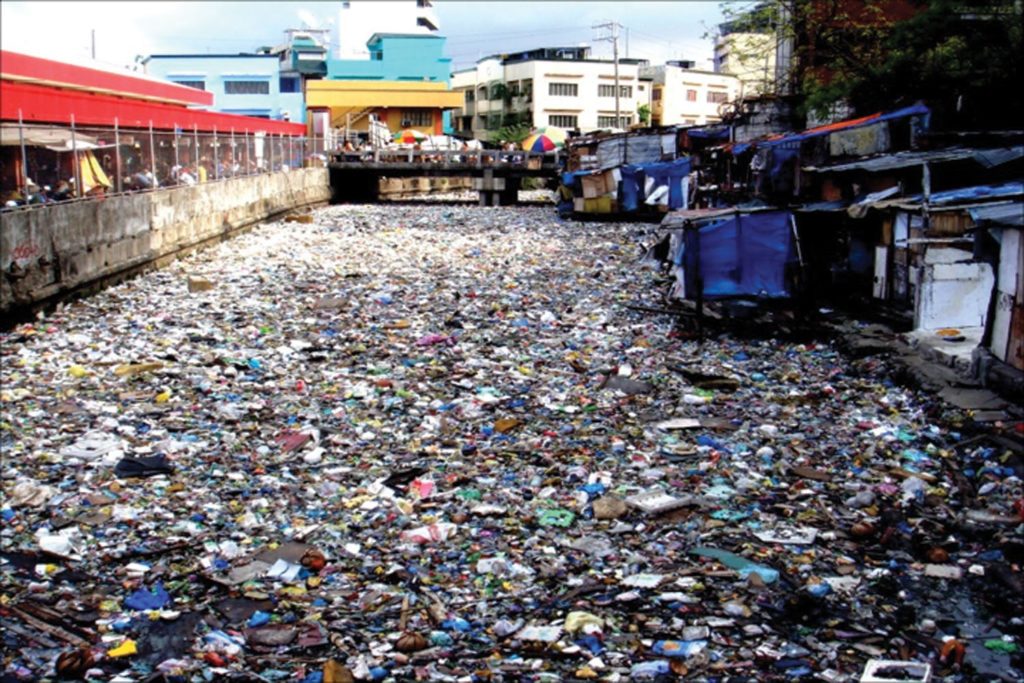“Water is a great teacher that shows us how to move through the world with grace, ease, determination, and humility. When a river breaks at a waterfall, it gains energy and moves on, as we encounter our own waterfalls, we may fall hard but we always keep moving on. Water is brave and does not waste time clinging to its past, but flows onward without looking back.” —Anonymous
Dreamers know no bounds and see only possibilities. They are grounded in God’s infinite grace and envision no limitations to their dreams. They keep on no matter what, and step by step, they see that what they committed to do, defines them, and inspires the organizations they lead.
First, there is Tony Meloto, who imagines the poor can be middle class in the Philippines, who keeps on, despite the odds and conflicts he faced. Today, Gawad Kalinga gets worldwide donations and has built homes for 2,000 communities. Second, there is Loida Nicolas Lewis who imagines a school, so Sorsogonian children can be educated in moral values, technology and entrepreneurship, then jobs or businesses as productive citizens in a global economy. The Lewis College now has close to a thousand enrolled students from K to college. Third, there is Dado Banatao who imagines strategic philanthropy as a significant bridge amongst Filipino Americans and Filipinos, funding science and technology researches, while producing high-value goods that anchor a sustainable economy in the Philippines. Today, his partnership with Philippine Development Foundation (formerly Ayala Foundation) and the Philippine government has created a research consortium, involving seven universities, aggregating their scientific capacities. Fourth, there is Vicky Wallace who imagines a bed and breakfast in Panglao, Bohol, using local crops and local labor. She is much ahead of her times when she conceived it a decade ago, when organic cooking and baking was not in vogue yet in Bohol. Now, her visionary thinking for Bohol Bee Farms gives jobs to hundreds of Boholanos, while she raises her own bees, farms her own produce and makes new dips using malunggay, with food technologists as new uses for fruits and vegetables.
Joining this circle of spiritually–grounded visionaries is Regina “Gina” Lopez who imagines the Philippines as the eco-tourism capital of the planet.
“We are not Singapore or Hong Kong, we are 7,000 amazingly beautiful and spectacular islands. Many of us do not even know the beauty that exists in our country because these islands are not comfortably accessible, to discover the magnificence of Sibuyan Island in Romblon and to even [get] more saddened to find that a people living amidst such magnificence could be so poor, “ she said.
“Envision it like Hawaii,” I told her. “Yes, yes,” she replied!
Gina’s transformational cleaning up of the Pasig River, a river long dead, like a landfill in one section, filled with mattresses, plastic bags, diapers, tires, bottles, and a dead carcass stench, has opened up collective imaginations and collective energies that kaya pala natin ito. Used to making a big splash, as part of a media-conglomerate family, she was raised to look at the problem in a strategic way. Watching her dad, Eugenio Lopez, by example, she learned from him the importance of integrity and vision.
Gina was asked to take over the Pasig River cleanup by former First Lady Ming Ramos. But, before taking it on, she sought partnership with the Department of Energy and Natural Resources (DENR). DENR agreed, so she accepted. Later, she was officially appointed by President Benigno S. Aquino to chair the Pasig River Rehabilitation Commission, under the DENR, along with Metro Manila Development Authority, Office of Executive Secretary of the President of the Philippines, Department of Tourism, Department of Public Works and Highways, Housing and Urban Development Coordinating Council, Department of Interior Local Governments, Department of Trade and Industry, Department of Finance, Department of National Defense, Department of Transportation and Communications, GMA Network, ABS-CBN Foundation/Bantay Kalikasan and Unilever. The commission’s goal was to have a viable river of Class C quality, fit for fishing, boating and manufacturing water supply for food processing. Mind you, this is a 15-year effort of cleanup and revival. Many unsuccessful attempts have been made in the Pasig River, including the relocation of top polluting industries, like chemicals and petroleum, which have since relocated. But, the unprocessed domestic wastes, to which only 7% of the households in Metro Manila are connected to sewage treatment, make the problem quite insurmountable. But not Gina!

Estero de Paco became the Pasig River Rehabilitation Commission’s demonstrative project. It was the largest estero, the dirtiest and presented the most challenge. What once was a slum-dwelling estero, it is now bordered by agapanthus and rubber plants, complete with what Gina calls “island reactor, with coco coir to filter the water, and man-made waterfalls.” Next to it is a newly built Paco Market, with stabilized rents. She is currently seeking donors to help former vendors the first rights to go back to the stalls, at $1,500 a stall. It is now a state of the art facility, with better managed and cleaner stalls, and no longer with an added stench from the nearby Pasig River.

I asked her what gives her a unique perspective in seeing the Filipino potential of healing Mother Nature and their capacity for change. While she grew up a child of privilege to the Lopez family (who owns prime real estate, utilities and biggest media network in the Philippines) and received a high school education at Assumption College, then college at Newton College of Sacred Heart in Massachusetts, she dropped out to become a yoga missionary for Ananda Marga, dedicated to the self-realization and service to humanity. Her commitment of 20 years led her to India, Kenya, Zambia, Ghana and Nigeria. She credits this part of her life as opening up her sights that poverty can be removed in the Philippines, “especially in the places which are beautiful, in these places, agriculture and eco-tourism is the way to go.” Her political will to see transformational change amongst the poor came about when she learned survival skills as a missionary in Africa.
She found herself without a safety net of being part of a media conglomerate nor the connections of a well-placed family. She learned that “when there is a will there is a way.”
“That as long as one had faith in one’s convictions, one can build dreams. I ended up with land, a house, a children’s home, a school. To survive, I would go to businesses and tell them what I was doing and invariably I would get support. I learned how the poor live. I lived in the slums of Africa where one had to stand in line for hours for water, taking a bath and washing with a bucket, where there are no toilets. I had to sleep on the floor. It was hard but I developed an affinity with the poor…I know what it is like,” she continued.
Indeed she knows. She applied the first principle in doing projects for the impoverished, malnourished children.
When she came back to the Philippines, she took on these projects that made a splash, not with fame and glamour, but with social impact. Bantay Bata is child welfare program of the ABS-CBN Foundation, with eight regional offices that provide rescue and relief for abused and sick children, while giving them quality home care and therapy, until they are reunited with their families or referred to appropriate childcare agencies. For her work in designing an all-around safety net for the abused Filipino child, she was recognized as one of the AAA awardees of the Asian Institute of Management. She was a UNESCO Kalinga Awardee for popularizing science through her innovative media work on math, sciences, national heroes, seeking help from the Department of Education to show these modules in the classrooms. In classrooms where they were shown, dramatic improvements were achieved in math and reading scores.
Her social-impact environmentalism appears to follow three principles in Van Jones’ Green Collar Economy’s book: first, equal protection for all, where the pain is minimized for the impacted group and their gain maximized; second, equal opportunity for those in pursuit of equity, where all are included; and third, reverence for all creation. She states her principles as: “commitment to integrity, compassion to care for each other, to work together, reverence for the environment and healthy lifestyle.”
She shared her work in Estero de Paco, next to Paco Market, to a group of Filipino Americans gathered in Goldilocks in Cerritos, California one evening in 2011. We were all riveted to her presentation that most folks did not leave until close to midnight. Housing for the informal settlers who lived on the banks of the waterways or esteros was first secured. They were relocated to a development called Bayan ni Juan, where concrete row houses were built, with a school and clinic in Calauan, Laguna. She is the first to say that she cannot do it alone, but together with a team of students, military, community volunteers, “where the cleanups were always a source of joy and kinship,” nothing seems impossible.
Gina is the first to admit that more investors are needed to set up businesses which will employ local folks, much like the visionary Vicky Wallace, who did it in Bohol for her province-mates, and much like Loida Lewis who is educating her fellow province-mates in Sorsogon. Gina had prevented more respiratory diseases and a new imagination has sprung from these new Calauan residents.
Now, the second principle of equal opportunities for all has to be satisfied. At the Paco Market, most of these retail vendors are provided opportunities to inhabit the new market stalls.
“Nothing can stand in the way of a people united for a noble cause,” Gina said: “I have a deep resonance with the environment. My spiritual practice is feeling the divine, entering stillness, then feeling the Higher Worlds. When one does this, one develops a very keen affinity with nature. Divine Energy is in Nature.”
As to the third principle of reverence for all, Gina succeeded in eradicating poverty in Puerto Princesa, where she helped the community residents in building trails, a waterless toilet, a visitor’s center, and other visitor-friendly improvements. With this community-based tourism, the community benefited. She has eliminated poverty in this area in just a period of two years with very minimal investment in five communities living amidst these gorgeous surroundings. “It has even reached the stage where the profit is big enough to roll over to another community,” she added.
Like water, moving with grace, ease, determination and humility, Gina has indeed been a social impact environmentalist, a peace-builder, healer and nurturer of Mother Nature by cleaning dead rivers and installing community-based eco-tourism!
